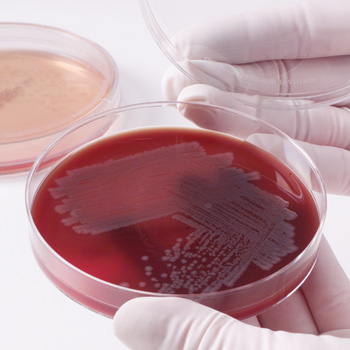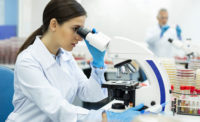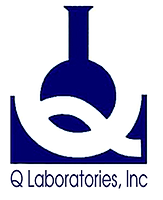Food Lab Accreditation Takes Off With FDA, USDA Support

Five years ago, fewer than 10 food testing labs in the U.S. were accredited, but today dozens of them are, and trends show that demand for accreditation is greater than ever. With the global economy blurring lines between where food comes from and where it ends up, the assurance of food safety test data is becoming an international priority.
Food lab accreditation certifies that a lab is using the best test tools and methods for the need and performing those tests correctly under ideal conditions, says Roger Brauninger, senior lab services officer for the American Association for Laboratory Accreditation (A2LA), a nonprofit, non-governmental, public service membership society that provides comprehensive services in laboratory accreditation and laboratory training. “Accreditation is a demonstration of competence,” he says. “It validates that the tests you are performing are appropriate, effective and universally accepted and it insures quality control over the food safety program of a processing facility.”
In dealing with foreign countries, these globally-accepted accreditation standards ease import and export issues regarding food safety, while locally they raise the bar for the entire food industry. “More than anything accreditation opens lines of communication between labs and their clients about what kind of tests are appropriate and the best methods to perform them,” he says. “It’s an education process, and in end consumers will benefit.”
Accreditation is still in its formative years, but interest in receiving food lab accreditation escalated when the U.S. Department of
Agriculture (USDA) and the U.S. Food and Drug Administration (FDA) both pursued and received accreditation for their own labs. “The government sees a need for credibility of food testing data, in the U.S. and around the world,” Brauninger says. “Because the USDA and FDA have gone in the direction of accreditation for their labs, the industry sees that they are serious. It sends a message about the importance of test credibility.”
Over the past five years, A2LA alone has accredited more than 60 food testing labs, he notes. This year alone, many in-house and third-party labs have expressed interest in gaining accredited status. “It adds credibility to their test data and that is part of the due diligence process.”
Something More Specific
Lab accreditation came about in the late 1990s, when the industry demanded more specific standards for test validation then what was covered in ISO/IEC/EN 17025 General Requirements for the Competence of Calibration and Testing Laboratories. In response, the Analytical Laboratory Accrediting Criteria Committee (ALACC) was formed, ultimately moving under the authority of AOAC International, to produce criteria explicitly for labs performing microbiological and chemistry tests for food, pharmaceutical and feed industries. “We needed criteria for the food industry that would formalize guidelines for good lab practices,” Brauninger says.
For a lab to receive accreditation, it must be able to prove to an accrediting body, such as A2LA, that its tests are applicable, appropriate and functioning correctly. Much of that process involves providing documentation of their effectiveness. Each test the lab uses must be put through the accrediting process to receive accreditation. To receive accreditation a lab must do the following:
• Identify the name of the test and provide written methods for the use of that test. It can be the standard accepted methods or a modified version of the method, but the lab must have written evidence that the method is being performed and that it works.
• Provide evidence that every technician performing the test has completed training on the method. This evidence must be formal documentation that effective training has been successfully completed.
• Provide evidence that the equipment used has been appropriately calibrated, preferably by an accredited calibration services provider.
• Provide evidence that the lab has conducted proficiency testing for each scope method. This should prove that the environment and accommodations in which the tests are performed doesn’t invalidate or compromise the test results in any way.
One of the most critical elements of this validation process is the use of reference materials to prove that the test will deliver positive results when the pathogen or bacteria being tested for is present. “The use of reference material is a quality control issue. You need to validate tests using cultures to make sure that a false negative will never happen,” Brauninger says. “Without that positive control you don’t know if your test is working.”
Companies such as MicroBioLogics, a leading producer of lyophilized micro-organisms for quality control in microbiology laboratories worldwide, enable labs to positively test their tools in their lab environments to prove their validity and provide the necessary evidence for accreditation. MicroBioLogics specializes in clinical, industrial, food quality, environmental and educational markets, offering more than 3,000 items featuring 500 different lyophilized microorganism strains (www.microbiologics.com). “MicroBioLogics is known for providing high quality reference material cultures,” Brauninger says. “It’s important to use high quality reference materials because if the antigen is there, you need to be sure your culture will express it.”
www.microbiologics.com
Looking for a reprint of this article?
From high-res PDFs to custom plaques, order your copy today!








